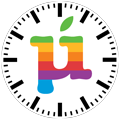4 Steps to Creating Great GarageBand Music
Some Advice on Music Creation.
Years ago, my music composition hobby transformed because I downloaded GarageBand into my iPod Touch. I became familiar with many of its tools. I tried out the instruments. I could spend hours in that app.
I caught GarageBand fever.
Looking back, I notice four steps that have helped me with GarageBand music — and I believe they’ll help any GarageBand beginner. As general advice on using creativity and GarageBand, these steps can be taken for any song.
Here are each step’s topics, which will require careful thought:
- Genres.
- GarageBand’s Instruments.
- GarageBand Learning.
- Editing.
If you’re ready to take each step, read on.
Note: The advice is based on experiences with GarageBand on an iPod Touch and an iPhone.
Determine Your Genre.
The first step to creating great music is to think about genres. Are you interested in creating a rock soundtrack? Do you enjoy dubstep? Do you like cinematic music? What if you like all of them?
There’s a good reason for this. As someone who enjoys multiple genres — cinematic, dubstep, etc. —I believe listening to these kinds of music have helped me determine how to create my own. For example, since I like epic music, I’ve found songs like Antti Martikainen’s “Supreme in Design” inspirational.
When you listen to your genre, pay attention to the instruments. Try to figure them out (For more advice on listening, check out “How to Build Music Listening Skills: 5 Tips for Active Listening — 2021 — MasterClass.”) But even if you’re unable to, try to memorize their sounds. Notice the volume of each instrument, the musical effect of the instruments’ mixing, the emotional effect of the entire song. When you go to GarageBand, this experience should guide you through your creations.
See GarageBand’s Instruments.
The instruments from the previous step matter here, because it’s time to check out GarageBand’s instruments and see which match what you’re looking for.
There are two things you should consider as you go through the instruments:
- The instruments’ similarity — When you first listen to GarageBand’s instruments, do they sound the same as those from the songs? If not, what are their differences?
- Tools for adjusting instruments— If GarageBand’s instruments don’t sound the same or you want to change their sounds, see if GarageBand allows you to experiment with them. For example, if I go to the keyboards to play the flute and I want the notes to sound softer and extend, I can turn the “Attack” and “Release” knobs till I get my ideal sound.
Remember that this is your song. If you want to add instruments that may not be from your genre, go ahead. Let creativity take over, as long as they contribute to your goals with your music.
Learn About GarageBand.
Improving GarageBand music requires spending time with the app. Choose a time not for recording music, but for learning what else GarageBand has besides instruments. I highly recommend that you take a look at these three features first:
- “Song Settings” — The GarageBand settings I often turn to are “Key Signature,” “Tempo,” and “Time Signature.” There may be a point where you want to change chords or tempos, so familiarizing yourself with them now would be best.
- “Song Sections” — Below GarageBand’s settings is a small plus sign. Tap that and then tap the section. Switch to either “Automatic” or put the number of bars you’d need for your song. The number of bars determines your song’s length, so make sure your adjustment is right for your song.
- “Track Controls” — This has several things to take notes on, but I especially recommend that you check out “Echo” and “Reverb.” Understand them, so you can better use them for your instruments for your song. Bass and treble are also good to learn early on.
To learn more about GarageBand from sources other than the app, visit GarageBand — Official Apple Support. Scroll down to check out their guides.
Let creativity take over, as long as they contribute to your goals with your music.
Edit till It’s Ready.
Every time I record a GarageBand song, it’s not unusual for me to re-record or edit tracks, listen to the song, and repeat.
Don’t get nervous. This is your time to see your progress! Think of it this way: Listening will let you know if you’ve met your music goals. Editing is your path to them. Although there are so many types of edits, here are three tips:
- Compare your song to other songs in the genre — This is your review of your progress. You made your rock-and-roll or sci-fi trailer music. See if your music is to your liking.
- Check those “Track Controls” once more — Do you think your instruments need more or less bass? How about reverbs? Follow your preferences and increase or decrease either, both, or neither, if they’re already great.
- Duplicate tracks, if needed — Sometimes an instrument from one track is too quiet and the settings might not amplify it enough, so I duplicate it. If you think this would help your music sound even better, go for it.
These steps may be challenging, but music creation is a challenge worth accepting.
Your genres lead you to the right instruments. But getting the best GarageBand recording experience requires learning what makes GarageBand GarageBand.
And it’s okay to not rush with your music because of your app learning. In fact, I find app learning to be one of the best parts about having GarageBand. (Pay attention to major app updates. Those are the best!)
And don’t forget: your final touches should let your GarageBand music reach a whole new level.

